Imagine a home where your lighting adapts to your every need, effortlessly shifting from a bright, invigorating morning glow to a soft, relaxing evening ambiance. This isn’t science fiction; it’s the reality of smart lighting. These innovative systems offer unparalleled customization, allowing users to adjust color temperatures, brightness levels, and lighting hues to suit preferences or moods. [Data 5]
Smart lighting tricks can completely revolutionize the way you experience your living space. By integrating advanced technology, smart lights enhance comfort, boost security, and significantly improve energy efficiency. The global smart lighting market, valued at USD 22.45 billion in 2024, is predicted to reach approximately USD 165.89 billion by 2034, expanding at a Compound Annual Growth Rate (CAGR) of 22.14% from 2025 to 2034. [Data 3] This rapid growth shows how quickly these solutions are becoming essential in modern homes. This article will explore 12 brilliant smart lighting tricks for any room, helping you unlock the full potential of your home’s illumination.
What Can Smart Lights Do? Unlocking Your Home’s Potential
Smart lights are far more than just simple bulbs that turn on and off. They represent a significant leap forward in home illumination, offering capabilities that traditional lighting simply cannot match. What can smart lights do? They integrate seamlessly with your smart home ecosystem, providing a centralized control for all your lighting needs. This connectivity allows for a dynamic and responsive environment, transforming how you interact with your home.
How do smart lights enhance your home? They bring intelligence and adaptability to every corner, making your daily routines smoother and your spaces more enjoyable. These devices offer features that cater to both practicality and ambiance, ultimately creating a more personalized and efficient living experience. They are a core component of any modern smart home setup.
Unparalleled Customization and Control
One of the most exciting aspects of smart lighting is the incredible level of customization it offers. You can easily adjust the color temperature of your lights, shifting from cool white for focus to warm amber for relaxation. Brightness levels are also precisely controllable, allowing you to dim lights to create a cozy atmosphere or brighten them for detailed tasks. Philips Hue, a popular brand, exemplifies this with its vast spectrum of colors and tunable white light options. Imagine setting a vibrant blue for a party or a soft, warm white for dinner.
Smart bulbs and light strips offer millions of color choices. This means you can truly match your lighting to your decor, your mood, or even the time of day. This flexibility is a key benefit, making every room uniquely yours. You simply cannot achieve this level of nuanced control with standard light fixtures.
Energy Efficiency and Cost Savings
Smart lighting is not just about convenience; it’s also about saving money and energy. These systems are designed with energy conservation in mind. They primarily use LED technology, which is inherently more efficient than older incandescent bulbs. Smart lighting systems can reduce overall lighting costs by 35% to 70%. [Data 1] This significant saving directly impacts your utility bills.
Switching to energy-saving smart LED bulbs can save the average homeowner around $225 per year. Data 2, 15] This is achieved through features like scheduling, motion sensors, and remote control, ensuring lights are only on when and where needed. For more information on reducing energy consumption in your home, consider exploring these [smart home energy savings hacks. The U.S. Department of Energy provides further details on how energy-efficient lighting can lead to substantial savings. [15]
Enhanced Security Features
What can smart lights do for security? They act as a powerful deterrent against intruders. By integrating smart lighting into your home security system, you can make your home appear occupied even when you’re away. This feature, often called ‘away mode,’ randomly turns lights on and off in different rooms.
Motion sensors linked to your smart lights can illuminate areas instantly when unexpected movement is detected, startling potential intruders. You can also receive notifications on your smartphone if lights are activated when you’re not home. This adds an extra layer of protection and peace of mind.
Convenience and Automation
The ultimate goal of smart home technology is to make your life easier, and smart lighting automation excels at this. You can program your lights to turn on when you wake up, dim as you settle down for the evening, or even adjust based on the natural light outside. This means you rarely have to think about flipping a switch.
Voice controlled lighting, through devices like Amazon Alexa and Google Assistant, offers hands-free operation. Simply tell your smart assistant what you need, and your lights respond. Integrating your smart lighting setup with other smart home devices further streamlines your routines. To learn more about connecting your devices, check out our Alexa, Google, Apple Smart Home Hub Comparison Guide.
12 Smart Lighting Tricks for Any Room
Now that we understand the broad capabilities of smart lighting, let’s dive into some specific smart lighting tricks you can implement today. These creative smart lighting solutions can transform every space in your home, adding both functionality and flair.
Trick 1: Set the Mood with Dynamic Scenes
Smart lighting scenes allow you to instantly transform the ambiance of a room with a single command or tap. Instead of adjusting each light individually, you can pre-set combinations of brightness, color, and color temperature for various activities or moods. This is one of the most popular smart lighting ideas for homeowners.
Consider creating scenes like “Movie Night” with dimmed lights and a subtle backlighting glow, or “Dinner Party” with slightly brighter, warmer tones. Many smart lighting systems, such as Philips Hue, offer a wide array of customizable scenes and even dynamic options that subtly shift colors over time. This trick ensures your lighting always matches the moment.
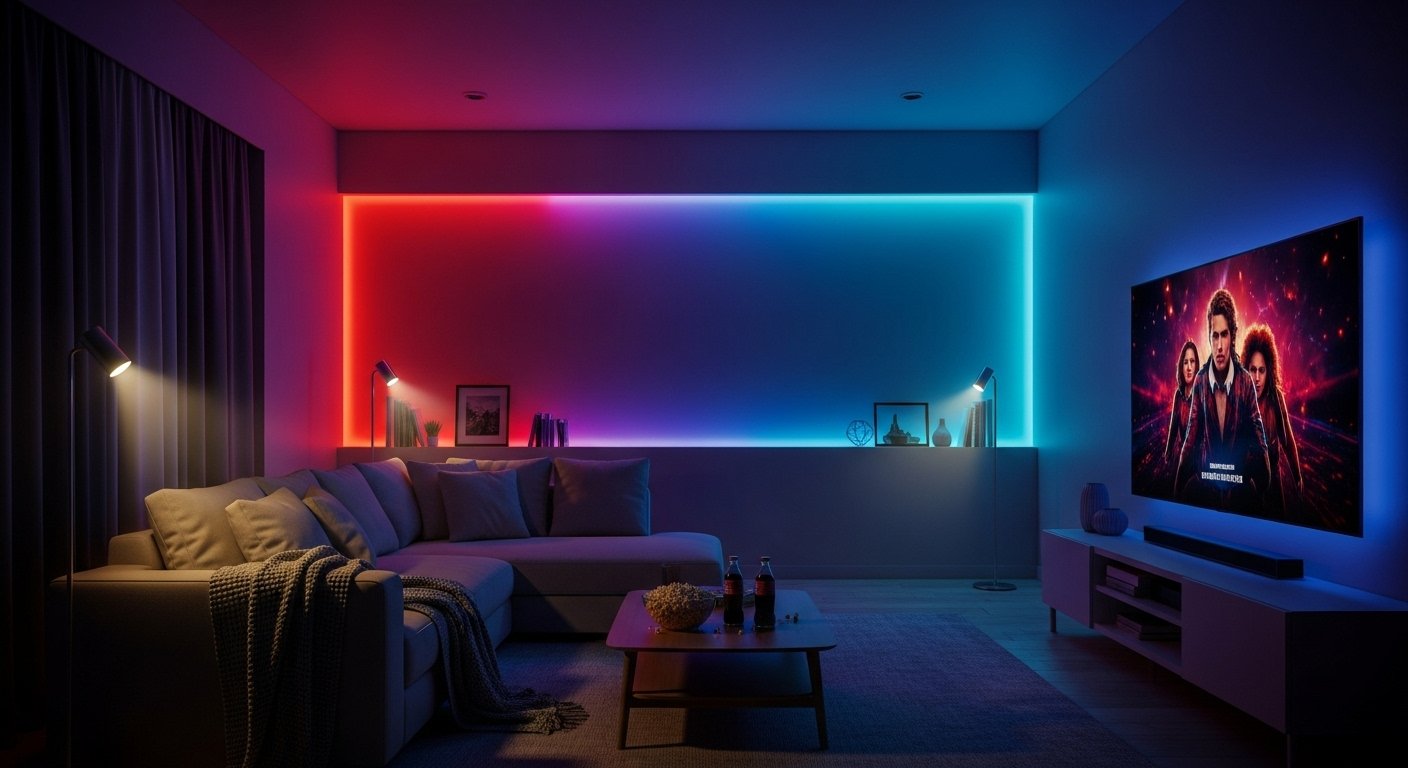
Trick 2: Automate with Schedules and Timers
Automation is at the heart of smart home lighting tips. Setting schedules and timers for your lights ensures they operate efficiently and automatically throughout the day. You can program lights to gradually brighten in the morning, mimicking a sunrise, or to turn off automatically at bedtime.
This smart lighting automation eliminates the need to remember to switch lights on or off. It also contributes significantly to energy saving smart lighting by ensuring lights aren’t left on unnecessarily. Think about having your kitchen lights turn on automatically as you prepare breakfast and then fade out after you leave for work.
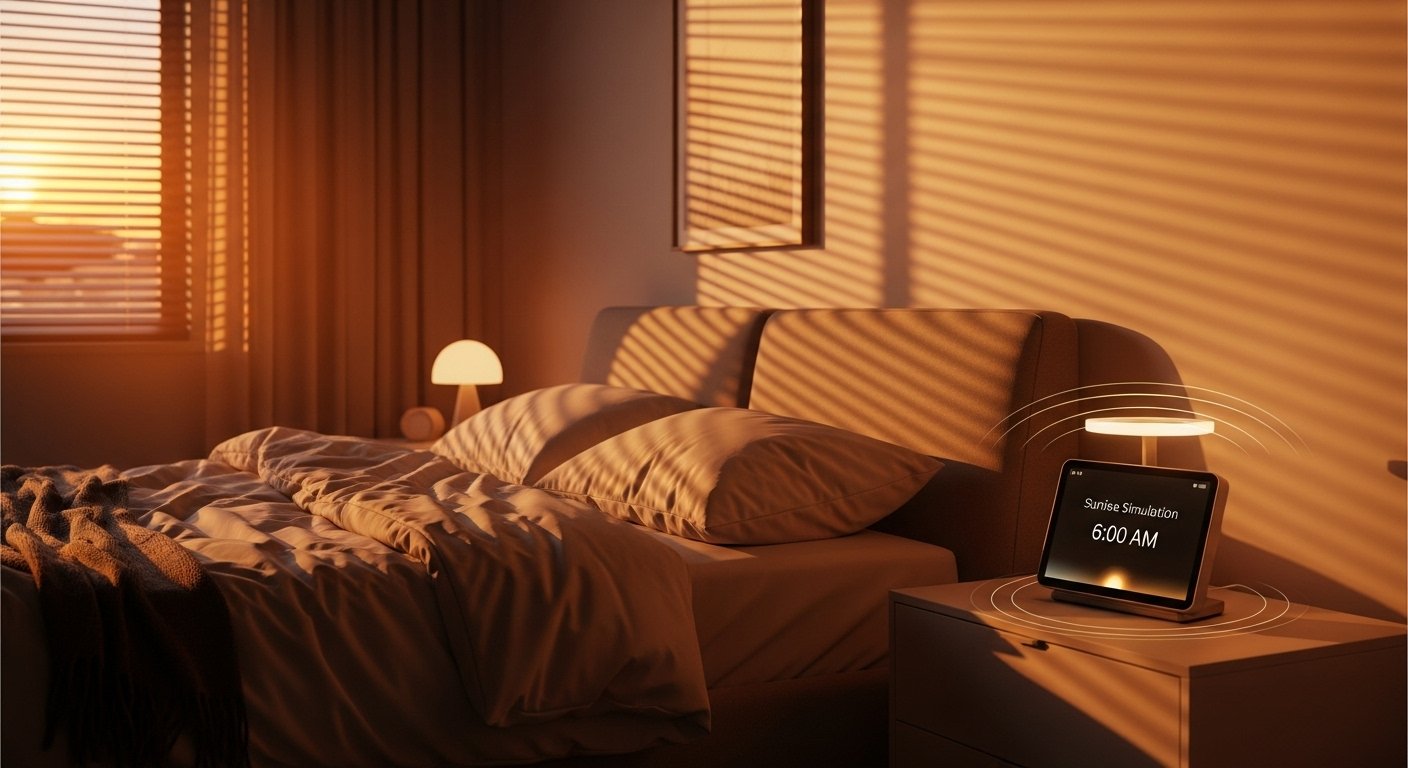
Trick 3: Voice Control for Ultimate Convenience
One of the most convenient smart light hacks is integrating voice control. With devices like Amazon Alexa and Google Assistant, you can control your lights using simple spoken commands. This hands-free operation is incredibly useful when your hands are full, or you’re simply relaxing on the couch.
How do I control my lights with Alexa? You just need to link your smart lighting system to your Alexa app, group your lights, and then say commands like “Alexa, turn on the living room lights” or “Alexa, dim the bedroom lights to 50%.” This seamless interaction makes managing your home’s ambiance effortless and fun.
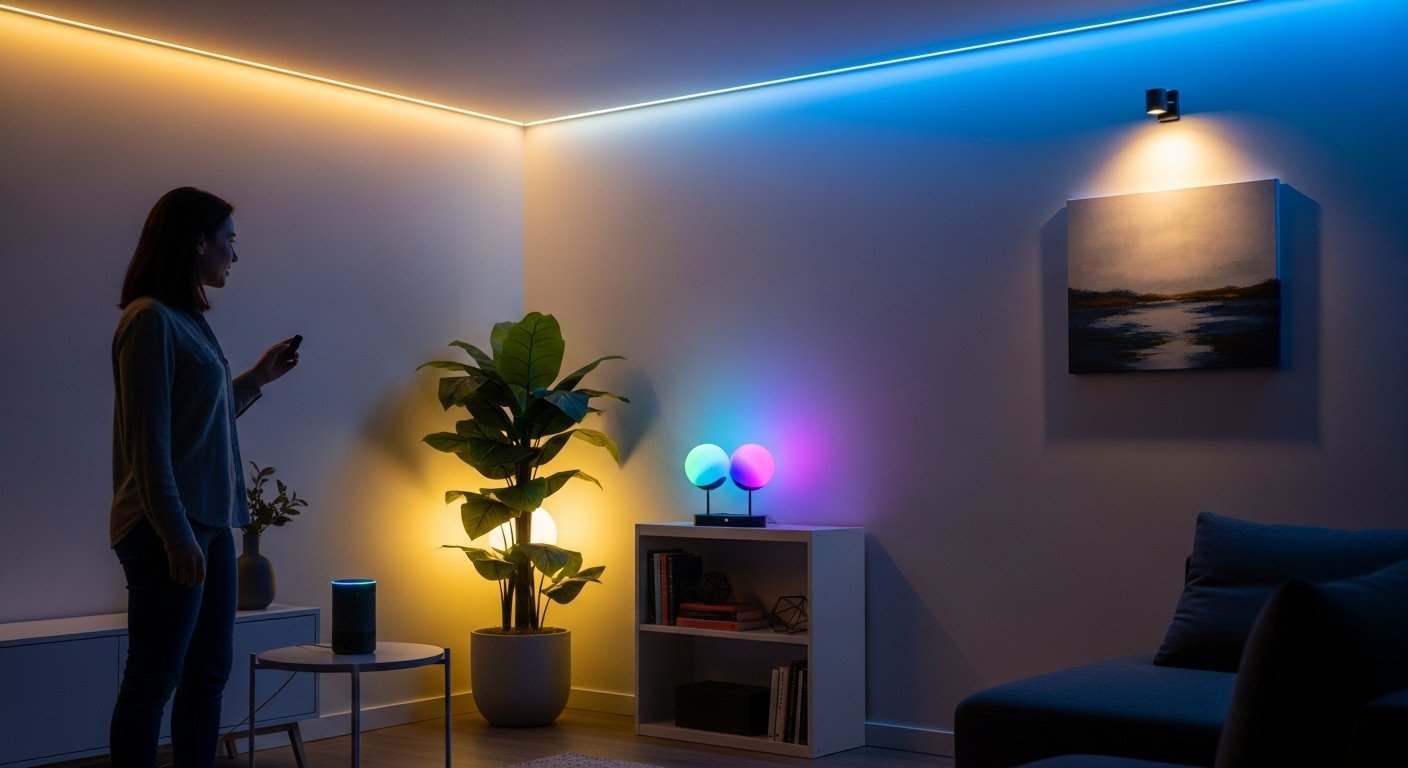
Trick 4: Integrate Motion Sensors for Hands-Free Lighting
Motion sensors are excellent tools for smart lighting automation, especially in high-traffic areas or spaces where you often enter with your hands full. Imagine walking into your pantry, laundry room, or even a hallway, and the lights automatically illuminate. As you leave, they turn off after a set period.
This smart lighting trick not only offers incredible convenience but also maximizes energy saving smart lighting. Lights are only on when someone is present, reducing wasted electricity. This is particularly effective in spaces that are not continuously occupied.
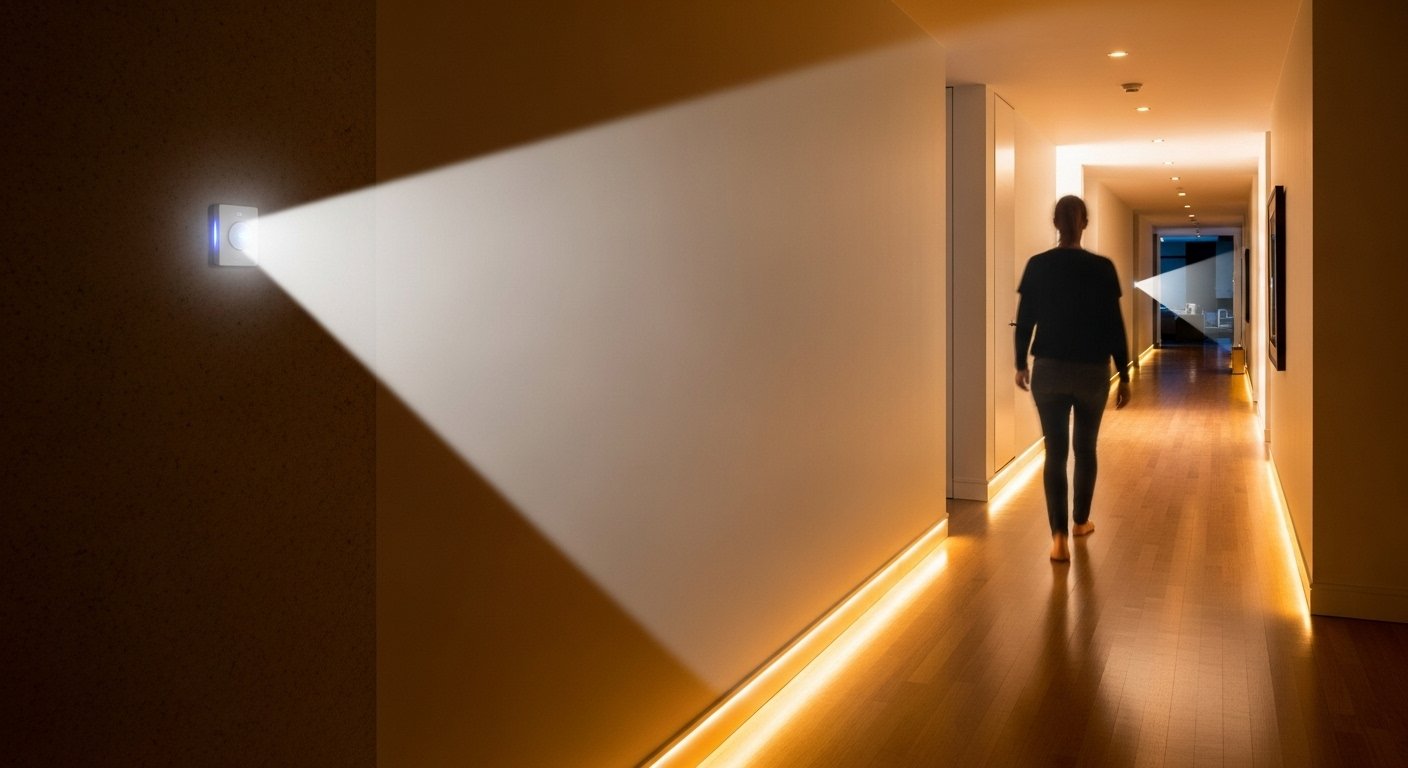
Trick 5: Boost Wellness with Circadian Lighting
Circadian lighting, also known as human-centric lighting, adjusts the color temperature and brightness of your lights throughout the day to mimic the natural changes of sunlight. This supports your body’s natural circadian rhythm, which helps regulate sleep, mood, and energy levels. Cool, blue-rich light in the morning can boost alertness, while warmer, red-toned light in the evening promotes relaxation.
This creative smart lighting solution can significantly improve your overall well-being. Studies have shown that circadian-informed lighting can improve vigilance, sleep quality, and reduce subjective sleepiness. [1] By aligning your indoor lighting with your body clock, you can enhance productivity during the day and achieve more restful sleep at night. Many smart lighting systems offer this feature through color temperature adjustment.
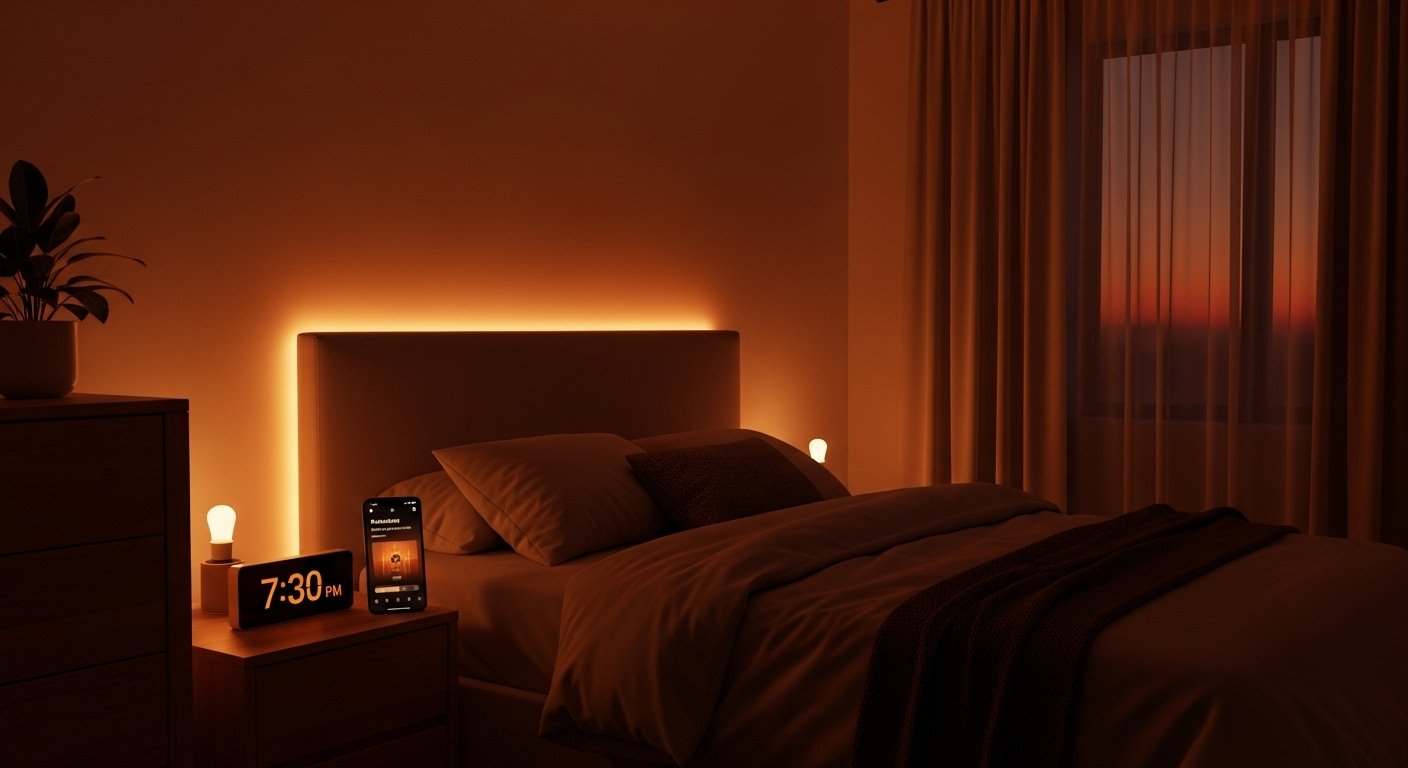
Trick 6: Create Zoned Lighting for Defined Spaces
Zoned lighting allows you to control different areas of a single room independently. This is especially useful in open-plan living areas or larger rooms where various activities occur. For instance, in a living room that doubles as a workspace, you can have bright task lighting over your desk while the rest of the room remains softly lit for ambiance.
Smart lighting for living room spaces benefits greatly from this. You can illuminate the dining area for meals, dim the TV area for entertainment, and keep a reading nook brightly lit, all without affecting other zones. This level of granular control enhances both functionality and aesthetic appeal.
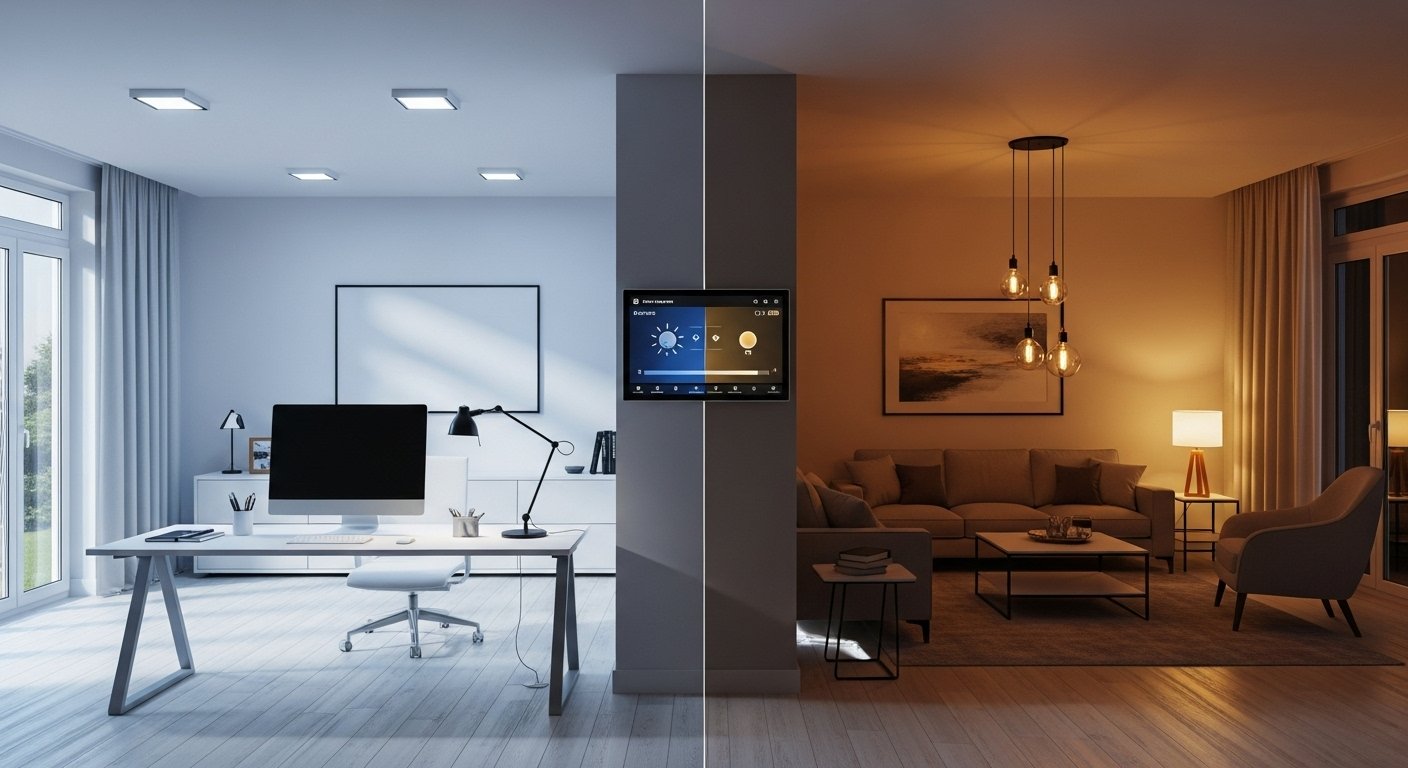
Trick 7: Enhance Security with Away Mode Simulation
Beyond simple schedules, an ‘away mode’ feature in many smart lighting systems can randomly activate and deactivate lights in different rooms at various times. This simulates a natural human presence, making your home appear occupied to outsiders, even when you’re on vacation. It’s a key component of smart home security.
This smart lighting trick is much more convincing than just leaving one light on all day. It uses unpredictable patterns to deter potential intruders, adding a crucial layer of passive security to your home. Consider linking this with an internal link to planning your overall smart home automation checklist: smart home automation checklist-planning-guide/.
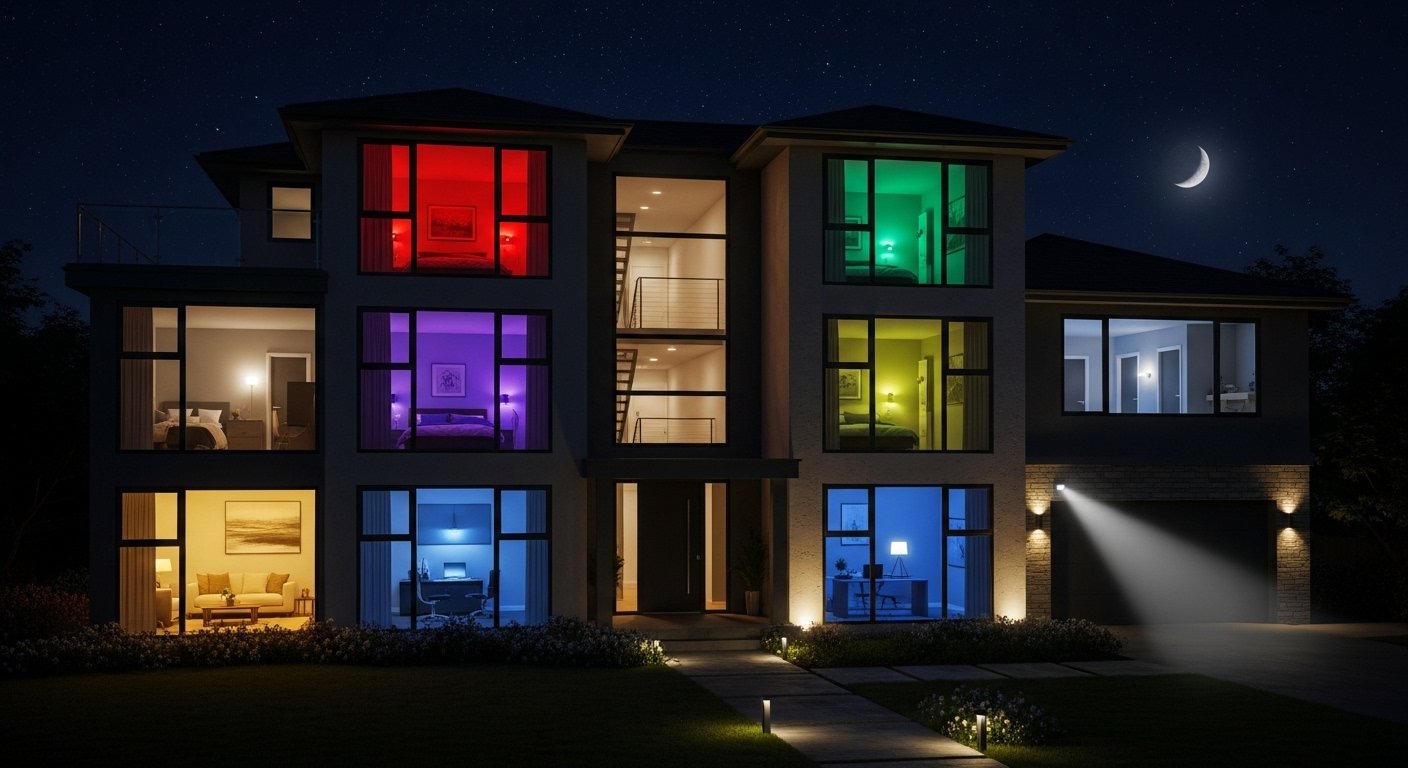
Trick 8: Smart Dimmer Switches for Existing Fixtures
Don’t want to replace all your light bulbs? Smart dimmer switches are an excellent affordable smart lighting solution. These devices replace your traditional wall switches and allow you to control existing, non-smart bulbs with smart home capabilities. You can dim them, include them in routines, and often control them via voice assistants.
This smart light hack offers a cost-effective way to integrate smart lighting into your home without a complete overhaul. It’s particularly useful for fixtures with specialized bulbs or for renters who cannot modify existing wiring significantly. They provide the convenience of smart control without the expense of multiple smart bulbs.
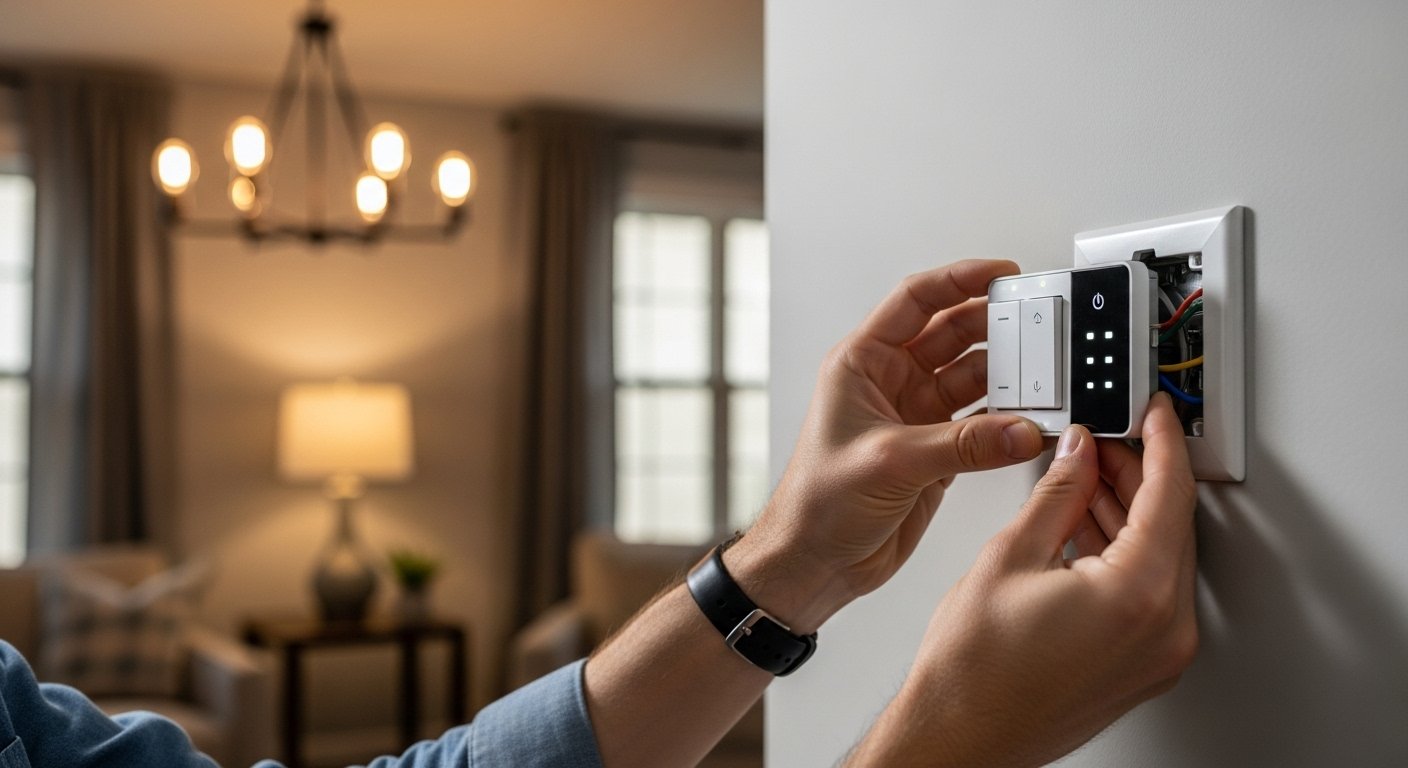
Trick 9: Accentuate Art and Features with Spotlighting
Smart lighting can be used creatively to highlight architectural features, artwork, or decorative elements in any room. By using smart spotlights or strategically placed smart bulbs, you can draw attention to specific areas and add depth and drama to your interior design. This is a fantastic creative smart lighting solution.
Adjust the brightness and color temperature of these accent lights to perfectly complement the object being highlighted. For example, a warm, soft glow can enhance a painting, while a crisp white light might make a sculpture pop. This trick adds a professional touch to your home’s aesthetics.
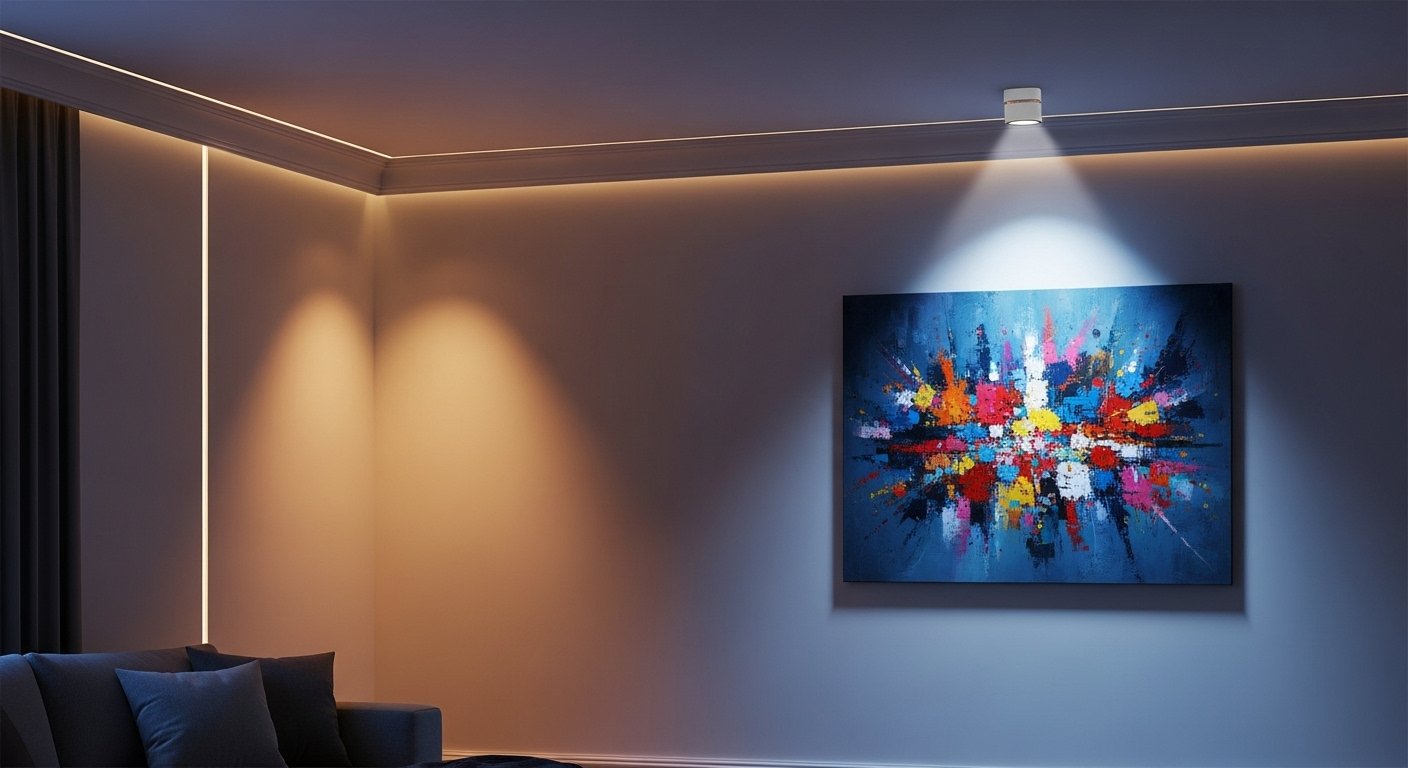
Trick 10: Smart Lighting for Small Spaces
Small spaces can feel cramped, but smart lighting can make them appear larger and more inviting. Use smart light strips under shelves, behind furniture, or along architectural coves to create indirect, ambient light. This technique reduces harsh shadows and creates a sense of openness.
Another trick for smart lighting for small spaces is to use smart bulbs in wall-mounted fixtures that direct light upwards, making ceilings appear higher. Avoid overly bright or cluttered lighting, which can overwhelm a small area. Instead, opt for layered lighting that provides depth and visual interest without taking up valuable floor space.
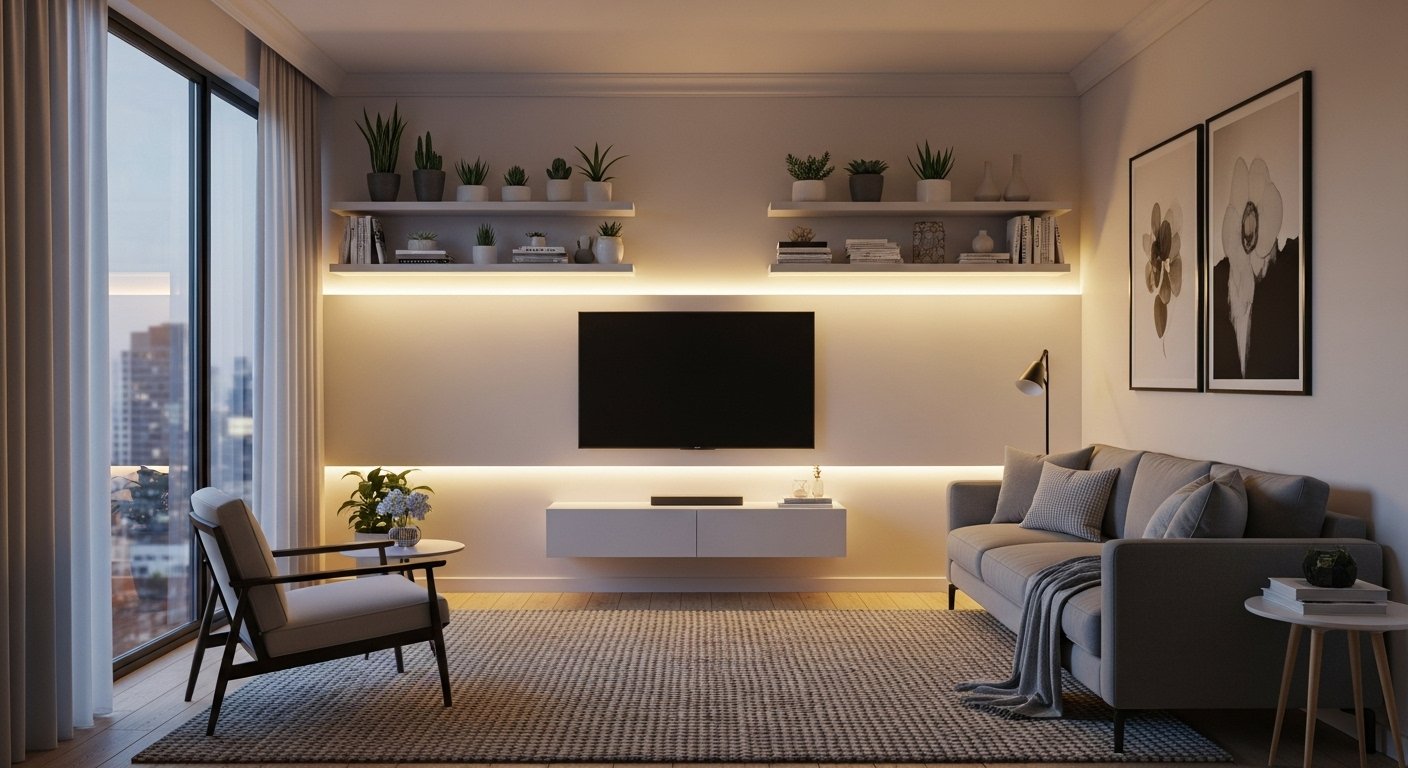
Trick 11: Improve Productivity in Home Offices
Your home office can significantly benefit from smart lighting ideas tailored for productivity. Use cool white light (around 4000K-5000K) during work hours to enhance alertness and focus. You can program your lights to shift to this color temperature automatically when you start your workday.
Consider adding a smart task lamp that you can control independently for focused work. When it’s time to unwind, switch to a warmer, softer light to signal to your brain that the workday is over. This smart lighting setup supports better concentration and helps you transition smoothly between work and relaxation.
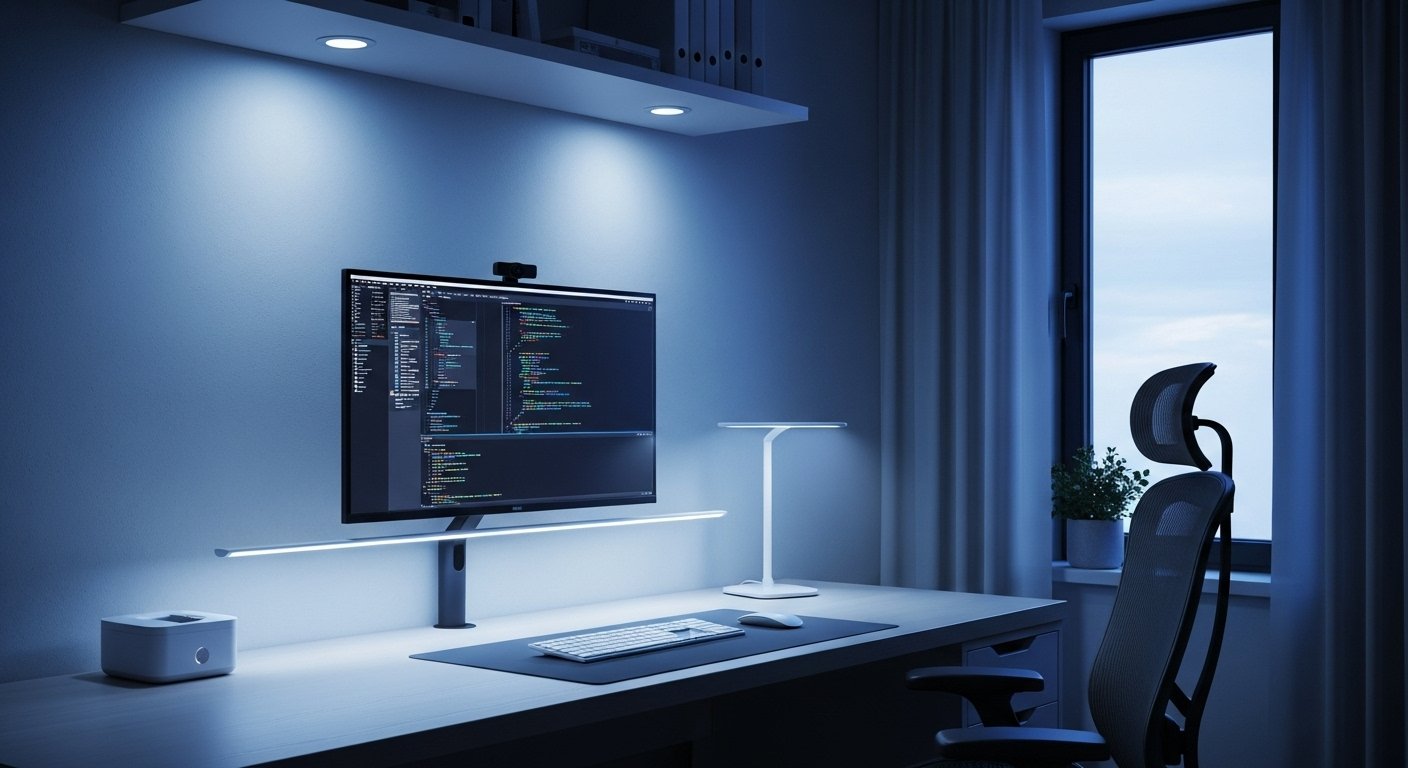
Trick 12: Creative Uses with Smart Light Strips and Bulbs
Smart light strips and smart bulbs offer endless possibilities for creative smart lighting solutions. Install light strips behind your TV for bias lighting, reducing eye strain and enhancing the perceived contrast of your screen. Place them under kitchen cabinets for functional task lighting and a modern aesthetic.
Smart bulbs aren’t just for overhead fixtures; use them in floor lamps, table lamps, or even in decorative lanterns for subtle pops of color. Experiment with different color combinations and effects to truly personalize your space. These smart light hacks allow you to inject personality and dynamic illumination into any room.
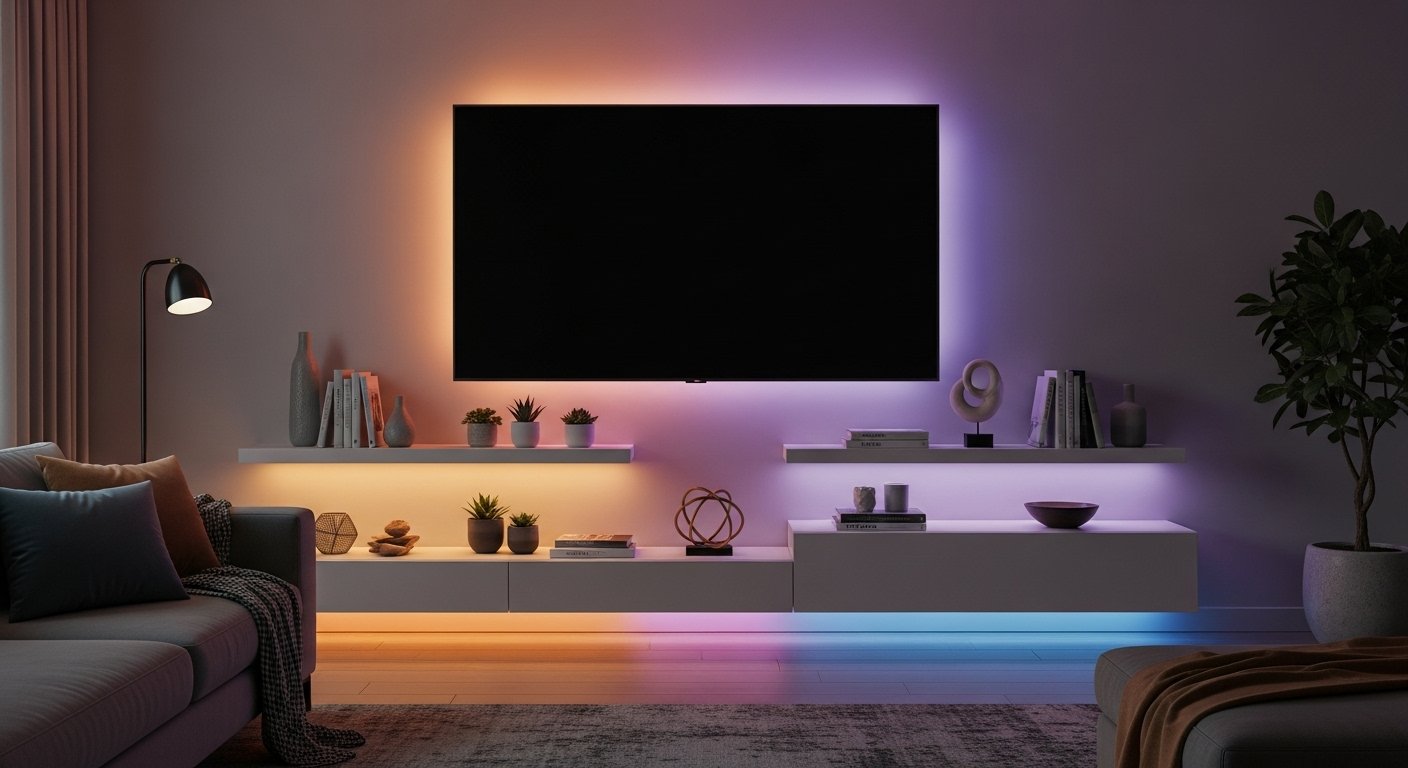
Smart Lighting Implementation: Room-by-Room Guide
Implementing smart lighting in different rooms requires a tailored approach. Each space has unique needs and functions, and understanding these will help you choose the best smart lighting setup. What are creative ways to use smart lighting in specific areas? Let’s explore some room-by-room smart lighting ideas.
Smart Lighting for the Living Room
The living room is often the hub of a home, used for relaxation, entertainment, and social gatherings. Therefore, smart lighting for living room spaces needs to be versatile. Incorporate layered lighting: use overhead smart bulbs for general illumination, smart lamps for ambient light, and light strips behind your TV or shelves for accent lighting. Set up multiple scenes for activities like “Reading,” “Movie Night,” or “Party.” Voice control with Amazon Alexa or Google Assistant makes switching between these moods effortless. Consider smart dimmer switches for existing fixtures to add flexibility.
Smart Lighting for the Bedroom
For the bedroom, smart lighting ideas should prioritize comfort and relaxation. Focus on warm, dimmable lights for evening wind-down routines. Implement circadian lighting to help regulate your sleep cycle, with gentle sunrise simulations in the morning and a gradual fade to darkness at night. Smart lighting for bedroom spaces benefits greatly from bedside lamps with smart bulbs that can be controlled from your bed. Motion sensors in hallways leading to the bathroom can provide soft, non-disruptive light during nocturnal trips. This thoughtful setup creates a serene and restful environment.
Smart Lighting for the Kitchen
The kitchen demands practical, bright task lighting, but also ambiance for dining. Smart lighting for kitchen areas should include bright, cool white lights over countertops and islands for cooking and meal prep. Under-cabinet smart light strips are excellent for this purpose. You can also integrate smart bulbs in overhead fixtures that can switch to warmer, dimmer tones for dinner parties or casual meals. Motion sensors near the pantry or sink can offer convenience, while voice control ensures you can adjust lighting even when your hands are messy.
Benefits of Smart Lighting: More Than Just Convenience
Beyond the individual tricks and room-specific applications, the overarching benefits of smart home lighting are compelling. What are the benefits of smart lighting? They extend far beyond simple convenience, touching upon aspects of efficiency, well-being, and security, creating a truly intelligent living environment.
- Significant Energy Savings: As mentioned, smart lighting systems drastically reduce energy consumption and costs. Switching to energy-saving smart LED bulbs can save the average homeowner $225 per year. [Data 2, 15]
- Enhanced Comfort and Ambiance: Unparalleled customization allows you to create the perfect atmosphere for any situation. [Data 5]
- Improved Security: Simulate occupancy, deter intruders with motion-activated lights, and gain peace of mind.
- Increased Convenience: Automate your lighting, control it with your voice, and manage it remotely from anywhere.
- Boosted Wellness: Circadian lighting supports natural sleep cycles and overall health. [1]
- Future-Proofing Your Home: Active households using smart lighting are expected to grow from 14.9% in 2025 to 34.1% by 2029. [Data 4] This growth indicates a clear trend towards smarter living, making smart lighting an excellent investment for modern homes.
Smart lighting tricks offer a transformative way to interact with your home. From creating dynamic moods to enhancing security and saving energy, these innovative solutions bring comfort and efficiency to your daily life. By thoughtfully applying creative smart lighting solutions and smart light hacks, you can elevate every room, making your home truly intelligent and responsive. Embrace these smart lighting ideas to personalize your space, streamline your routines, and enjoy a smarter, brighter future.
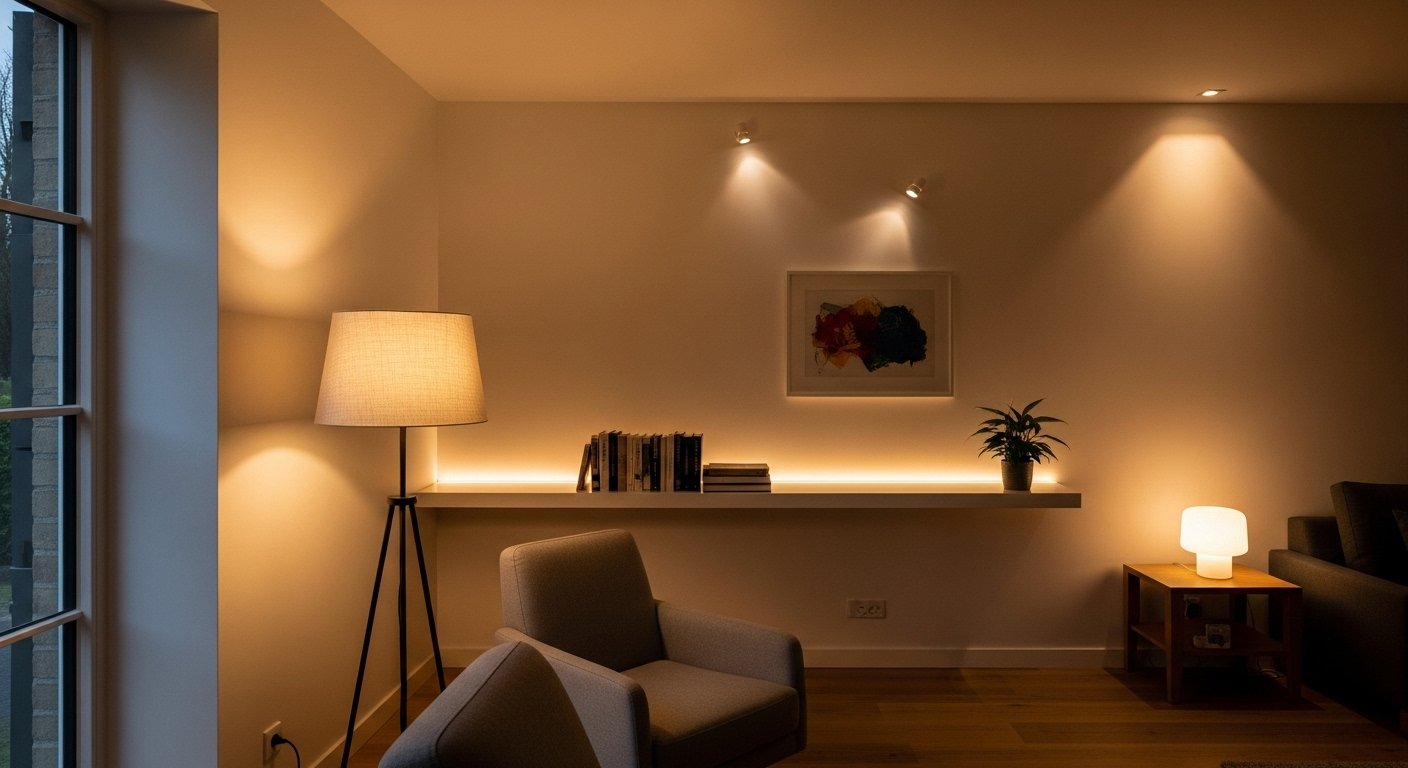
Leave a Reply